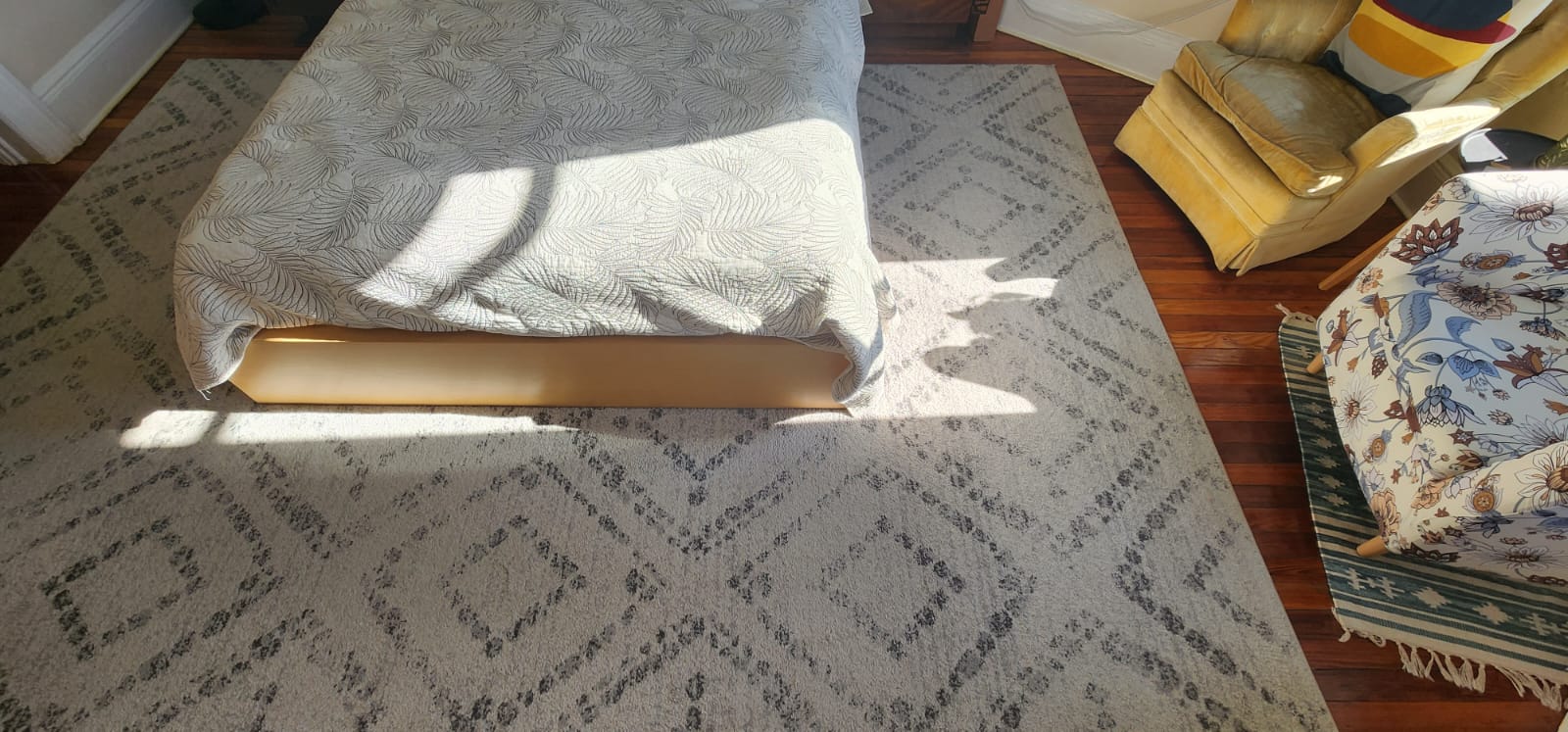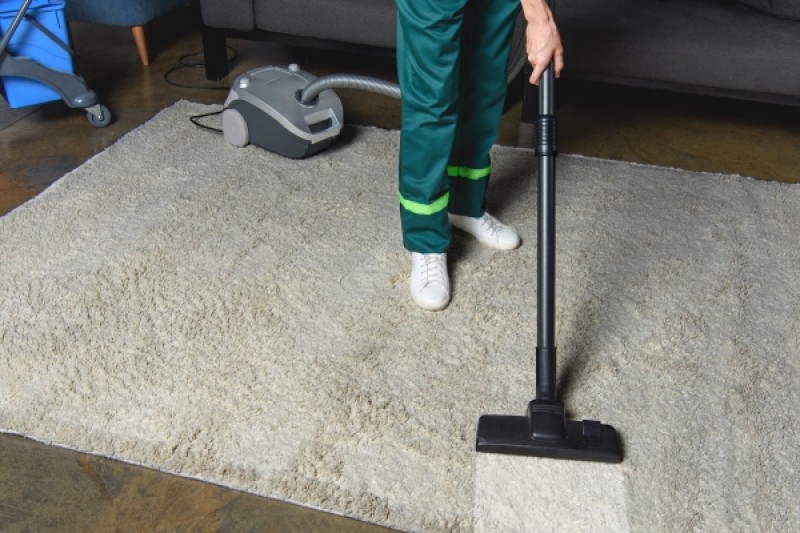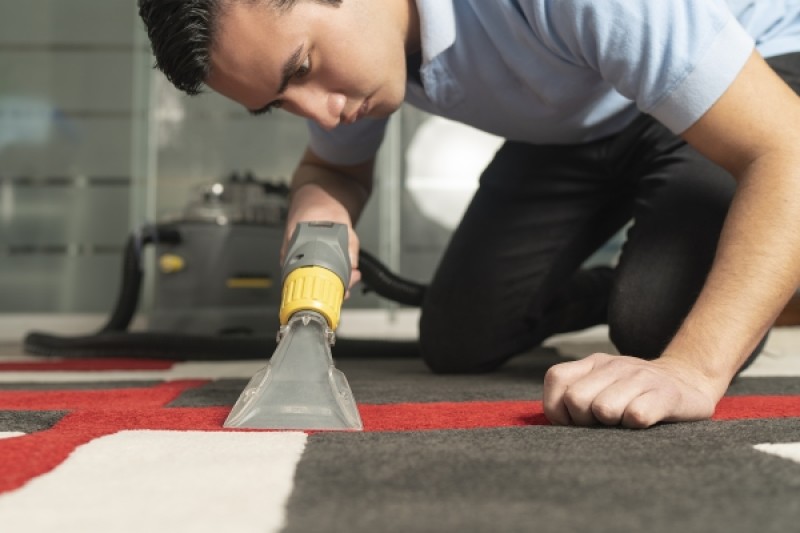Keeping a tidy and clean bedroom is crucial for our overall well-being. In modern bedrooms, upholstered beds are a popular choice due to their comfort and aesthetic appeal. However, they need regular cleaning and upkeep to remain fresh and hygienic.
Upholstered beds are a bit more challenging to clean than their wooden or metal counterparts, but they are still a wonderful bed frame pick and can be cleaned easily
Cleaning upholstered beds is essential to avoid accumulating dust, dirt, and bacteria, which can lead to an unsanitary sleeping environment. These can result in various health issues such as allergies, skin irritation, and respiratory problems.
Conversely, keeping a clean bed provides numerous benefits such as improving indoor air quality, enhancing sleep quality, and elevating the overall appearance of the bedroom. By following a few simple cleaning tips and taking care of your upholstered bed, you can create a comfortable and healthy sleeping environment that you will enjoy for years to come.
Gather Your Supplies
To effectively clean your upholstered bed, you'll need to have a few supplies on hand. Depending on the type of upholstery your bed has, you may need different cleaning agents. However, the following items are generally useful for cleaning most types of upholstered beds:
- Vacuum with a brush or upholstery attachment
- Dish soap
- Warm water
- 3 clean sponges
- Fan (optional)
Make sure you have these items before you start cleaning to ensure that the process goes smoothly. If you don't have a vacuum with a brush or upholstery attachment, you can use a regular vacuum and a soft-bristled brush to remove any dust or debris from the surface of the upholstery.
Before You Make Your Headboard Worse, Read This
Cleaning upholstered beds is not a one-size-fits-all approach. Depending on the type of material used for the upholstery, different cleaning methods and products may be required. To help you keep your upholstered bed looking and feeling its best, here’s a list of cleaning tips for different materials commonly used in bed upholstery.
Note: When dealing with upholstered items, it is important to identify the type of material they are made from to determine the best cleaning approach. Typically, a label will be attached to the item indicating its composition, but if it is missing, the material can often be identified by its texture and appearance.
Velvet:
- Soak liquid spillages with a dry white cloth
- Blot stains with suds from a mix of mild detergent and water
- Avoid rubbing velvet
- Blot with a dry cloth
- Use a hairdryer to dry the area faster
Wool:
- Avoid wet cleaning as wool retains water
- Use steam cleaning instead
Linen:
- Vacuum upholstery thoroughly to remove dust
- Treat fresh stains by blotting with a white cloth, but never rubbing
- Clean carefully with a mix of mild detergent and water
- Open windows in the bedroom after cleaning to prevent mold from setting in
Suede:
- Use an upholstery brush on a vacuum to remove dust, debris, and hair
- Make circular motions with a soft suede brush
- Apply suds from a mix of mild detergent and water with a white cloth
- Gently blot any stains
- Use a dry white cloth to dry the area
Leather:
- Check the manufacturer’s label for specific cleaning instructions
- Vacuum leather with a soft brush to remove dust and hair
- Apply a slightly damp cloth with some moisturizing soap to the surface
- Buff leather with a soft dry cloth
- Apply polish if desired
Usually, your upholstery will come with labels that have cleaning instructions. Here’s what to look out for,
W: If the headboard has a W code, it is suitable for cleaning with water-based cleaners, which are widely available and easy to use.
S: A headboard labeled with an S code must be cleaned with water-free solvents or dry-cleaned. Take caution while using solvents as they are flammable and emit harmful vapors.
W/S: If the headboard bears both W and S codes, you can choose between water-based cleaners or dry cleaning. However, make sure to spot-test the cleaning agent before applying it to the entire headboard.
X: For a headboard with the X code, you should refrain from using water-based cleaners or solvents. Instead, use a vacuum or brush for cleaning.
Prep For The Cleaning
Before starting the cleaning process, it's important to prepare properly to avoid any unnecessary mess. Here's what you'll need to do:
Gathering Necessary Tools and Materials
As mentioned earlier, the materials and tools required for cleaning upholstered beds may vary depending on the type of upholstery. However, the most common items include a vacuum cleaner with a brush or upholstery attachment, dish soap, warm water, three clean sponges, and a fan (optional). Gather all these materials before starting the cleaning process.
Removing Bedding and Accessories
Before cleaning your upholstered bed, it's essential to remove all bedding, including pillows, sheets, and blankets. This will prevent any dirt or dust from getting on them during the cleaning process. Also, remove any accessories, such as decorative pillows or throws, from the bed to ensure you have easy access to the upholstery.
Cleaning the Headboard
Once you have prepared your cleaning tools and removed all bedding and accessories from your upholstered headboard, it's time to start cleaning. Depending on the type of material your headboard is made of, you can use different dry cleaning techniques, spot cleaning methods, or deep cleaning methods.
Dry cleaning techniques are ideal for lightly soiled headboards or for regular maintenance. You can use a soft-bristled brush or the upholstery attachment on your vacuum to remove any dust or debris. Another option is to use a dry cleaning solvent recommended for your specific upholstery material, such as a foam cleaner or dry cleaning spray.
Spot cleaning stubborn stains is necessary when dry cleaning techniques do not remove all stains. It's important to test any cleaning solution on a small, inconspicuous area of the headboard before applying it to a larger stain. For most materials, you can use a mix of mild detergent and warm water to blot the stain gently. Avoid rubbing the stain, as this can damage the fabric.
For heavily soiled headboards, you may need to use deep cleaning methods to remove all dirt and grime. This is especially true for materials like linen or suede, which can absorb stains and dirt easily. Steam cleaning is a great option for deep cleaning as it can remove dirt and bacteria without the need for harsh chemicals. However, be sure to check your headboard's cleaning instructions before using steam cleaning.
By following these cleaning techniques, you can ensure that your upholstered headboard stays looking fresh and clean for years to come.
Cleaning the Mattress
A clean mattress is essential for a good night's sleep. Over time, mattresses can accumulate dust mites, dirt, and sweat, which can cause a range of health problems such as allergies and skin irritation. Here are some steps to follow to clean your mattress.
Vacuuming the mattress: Start by vacuuming your mattress using the upholstery attachment of your vacuum cleaner. This will remove any dust, dirt, and hair that has accumulated on the surface.
Spot cleaning stains and spills: For stains and spills, use a mixture of mild detergent and water to spot-clean the area. Apply the solution with a clean cloth and blot the area gently, being careful not to saturate the mattress. Then, use a dry cloth to blot the area and remove any excess moisture.
Deep cleaning methods for heavily soiled mattresses: If your mattress is heavily soiled, you may need to use a deep cleaning method. One option is to use a steam cleaner, which will kill any bacteria and dust mites. Alternatively, you can sprinkle baking soda over the surface of the mattress and let it sit for several hours before vacuuming it off.
Cleaning The Bed Frame and Other Upholstered Parts
Cleaning the bed frame and other upholstered parts is just as important as cleaning the headboard and mattress. Dust and dirt can accumulate on these surfaces, and if left uncleaned, they can negatively impact the overall appearance and hygiene of your bedroom.
To clean the bed frame, start by dusting the surface with a soft-bristled brush or vacuuming it using the upholstery attachment. Pay attention to the crevices and corners of the bed frame, where dust can accumulate. For spot cleaning, use a damp cloth and mild detergent to gently scrub away any stains or spills. If the bed frame is heavily soiled, consider using a deep cleaning method such as steam cleaning.
Other upholstered parts such as the footboard and side rails should also be cleaned regularly. Follow the same steps as the bed frame, dusting or vacuuming first, spot-cleaning stains and spills, and using a deep cleaning method if necessary.
By taking the time to clean all the upholstered parts of your bed, you can ensure a clean and hygienic sleeping environment, while also prolonging the life of your bed frame.
Maintenance Tips for Upholstered Beds
Keeping your upholstered bed clean and fresh requires regular maintenance, and here are some tips to help you maintain the hygiene of your bed for the long term.
Regular Cleaning Schedule
Set a regular cleaning schedule for your upholstered bed, and stick to it. Regular cleaning will help prevent dirt and dust from accumulating and avoid tough stains. Weekly vacuuming and light cleaning with a damp cloth should suffice. Deep cleaning and spot cleaning should be done as needed.
Preventative Measures to Avoid Dirt and Stains
Prevention is key when it comes to keeping your upholstered bed looking fresh and clean. There are a few simple measures you can take to avoid dirt and stains. For instance, avoid eating and drinking in bed, and remove your shoes before getting into bed. You can also use mattress protectors and bed covers to protect your bed from spills, stains, and dirt.
Professional Cleaning Services
If you find it challenging to keep your upholstered bed clean, you may want to consider professional cleaning services. We at Pristine Green Cleaning have the expertise and tools to deep clean your bed, remove tough stains, and restore its appearance. Professional cleaning should be done annually or as needed, depending on the level of use and wear and tear.
By following these maintenance tips, you can ensure that your upholstered bed stays clean, fresh, and hygienic for years to come.
Conclusion
In conclusion, maintaining a clean and hygienic upholstered bed is essential for creating a healthy and comfortable sleeping environment. We have discussed the importance of regular cleaning and provided you with tips and techniques for cleaning different types of materials. Remember to gather the necessary tools and materials, and follow the steps for each section to achieve the best results.
To maintain your upholstered bed's cleanliness, it is important to follow a regular cleaning schedule and take preventative measures to avoid dirt and stains. Professional cleaning services are also available for a deeper cleaning, and can be a great option for those who don't have the time or equipment to do it themselves.
In summary, a clean bed promotes better indoor air quality, enhances the overall appearance of the bedroom, and leads to better sleep quality. We encourage you to implement a regular cleaning routine for your upholstered bed and take pride in your fresh and clean sleeping space.




